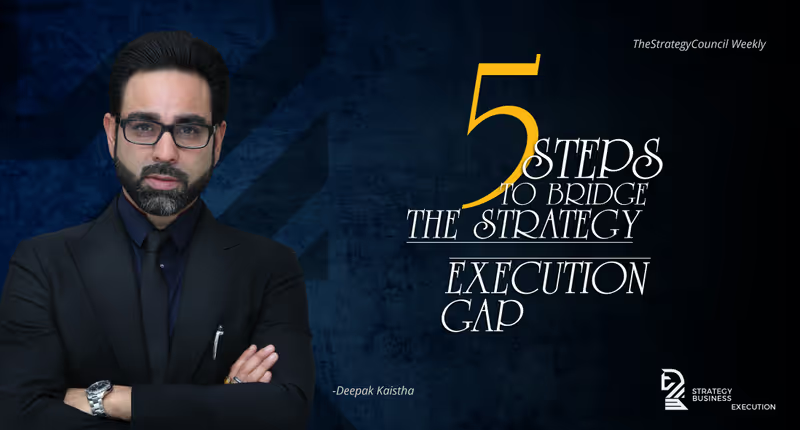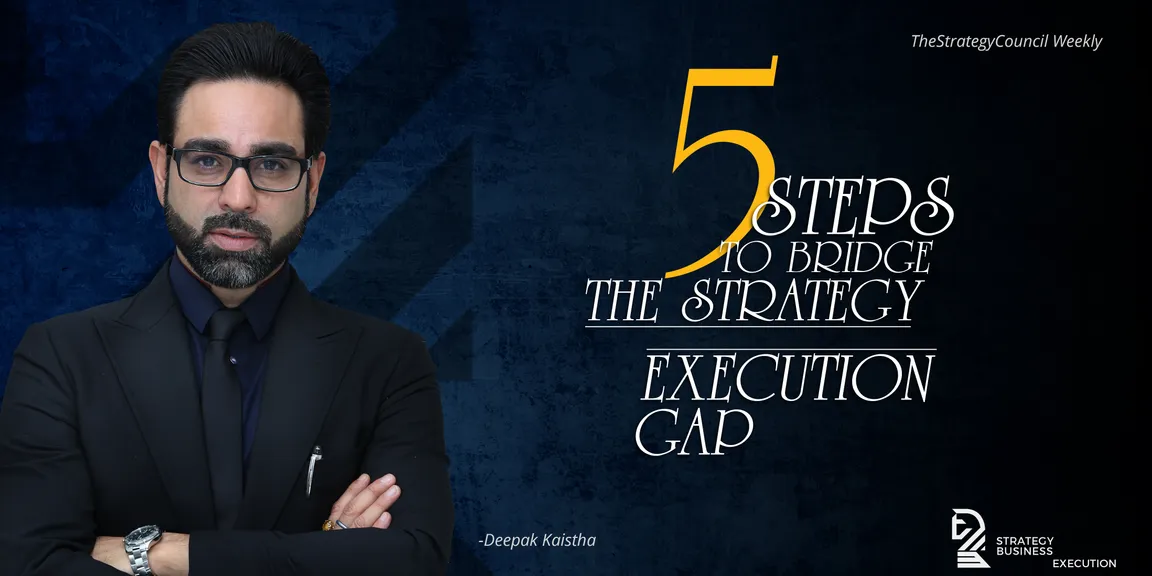

5 Steps to Bridge the Strategy- Execution Gap

Businesses are implementing increasingly intricate strategies to survive, succeed and generate real value in today’s competitive global markets. But even if a business defines most brilliant strategies by carefully examining the market and technology trends – the battle is only half won. Because if these strategies are not put into action and executed accurately – they are worthless.
It’s easy to spend hours and hours for articulating a good strategy but that doesn’t mean a thing if it is not backed up with actions.
More than 80% of organizations will have a great strategy at one end of the planning gamut and execution process at the other. Why? Because executing a strategy is an uphill struggle.
Many leaders have a blind spot in the execution area- believing that their job is only to set direction and execution is the responsibility of lower-level managers. But strategy and execution are fluid and intertwined. As these both flow, execution demands adjustments to strategic planning in terms of communication and cross-functional coordination thus making the overall task of execution more challenging and time-consuming.
Many organizations fail to recognize and act upon this execution gap and unfortunately, become a force fit into existing operational processes and organizational structure. It’s important for companies to make a conscious effort to close this execution gap. All that is required is to take steps to create some fundamental elements that encourage a “get it done” culture.
Such as:
1) Start your execution with a plan and not the strategy: An end-to-end thought through execution plan will not only improve the efficiency of the project but will transform the business at large. Set an ambitious strategy – not in terms of finances but in terms of sustained value creation and aspire just as high on the execution end in terms of dedication and obsession of achieving the goal. When held together, an ambitious strategy with an obsessive execution plan will work wonders for your organization.
2) Forget your weaknesses and Play to your strengths: Look for your strengths that set you apart from others. Use them as a starting point to step up the success ladder. Articulate your achievements, where you excelled as an organization and outline what it will take to build on your strengths. The more you are aware of your strengths, the more opportunities you will look for to build on them.
3) Involve people who are ‘Bilingual’ for decision making: In business, bilingual means, to be able to speak the language of the boardroom as well as the execution team with same ease. For bridging the gap between strategy and execution, people across company need to master the skill of bilingualism. This way they can envision a great strategy and its execution route. Encourage bilingualism in processes and practices so that people can relate to the big picture easily.
4) Change your performance management system to a business toll: Any business can have a remarkable vision and enthusiastic people. But in a result-oriented business culture, it’s important to have a good tracking system that can monitor the road from strategy to execution. Once a strategy is signed off, it should be integrated into an employee’s performance and appraisal measurement system. This will set a culture of “how to do” instead of “what to do”. Employees will be clear of actions to be taken to support the strategy execution that will meet company’s long-term objectives.
5) Clarify. Clear. Communicate: Assuming the team will understand what needs to be done is a manager’s folly. It’s important to keep the expectations as close to the actions as possible. Underestimating the need to communicate and clarifying “what needs to be done” with the team may result in unwanted bottlenecks.
Executing a strategy successfully is a constant challenge. To gain a competitive advantage, it is imperative that strategic and operational decisions are translated into action in minimal time and once they do, you’ll notice an improvement in individuals, teams and the overall ability of the organization in executing plans and proposals. Wins will come in easy bringing along inspiration and encouragement for the employees and making them more efficient and responsive.
And then you realize that your mission statement actually holds true!
“Theory without practice is pointless, practice without theory is mindless."






